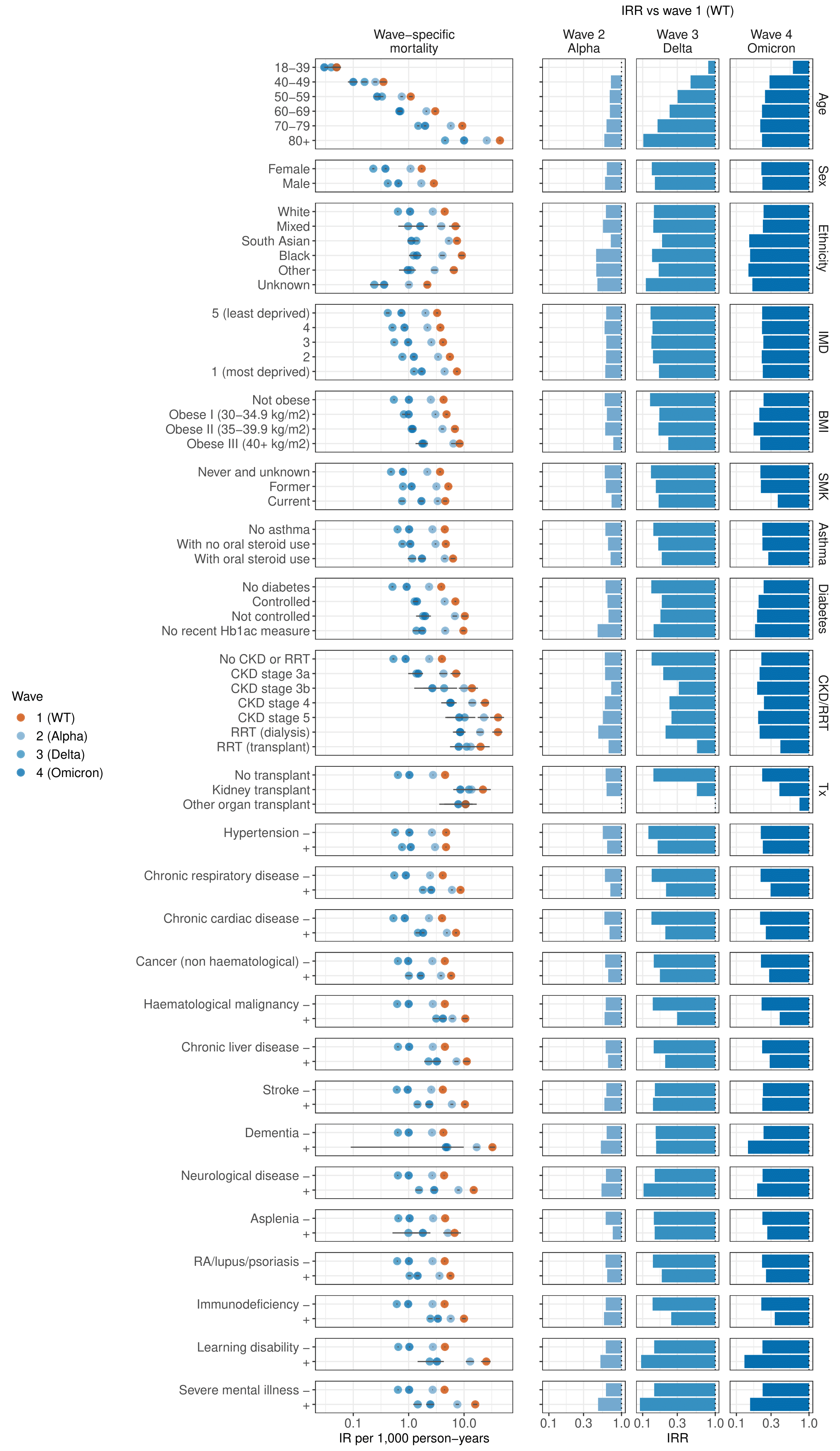COVID-19-related mortality from 2020 to 2022: the changing picture
- Posted:
- Written by:
-
- Linda Nab
- Categories:

Last week, Lancet Public Health published our paper describing changes in COVID-19-related mortality from 2020 to 2022. Since the publication of the first OpenSAFELY paper in Nature in April 2020, describing risk factors associated with COVID-19 mortality, the landscape of COVID-19 has changed. As the pandemic progressed, preventive measures changing COVID-19 mortality risks have been introduced such as lockdowns, social distancing, national vaccination programmes, and different SARS-CoV-2 variants have been circulating. In this blog, Linda Nab from our Epidemiology Team, the first author of the paper, will describe patterns in COVID-19-related mortality in the first five pandemic waves, focussing on absolute death rates.
Inequalities in the first pandemic wave
The first OpenSAFELY paper published in Nature reported higher COVID-19-related mortality associated with older age, male sex, greater deprivation, minority ethnicity, diabetes, severe asthma and various other medical conditions. We repeated the analysis, and set out to describe changes in the distribution of absolute and relative population-level COVID-19-related mortality risks across population subgroups from 2020 to 2022. We compared COVID-19-related death rates in the first pandemic wave with death rates in subsequent waves. The Figure below depicts these death rates and how they changed over time. In the first column, the wave-specific mortality is shown. In the three columns on the right, the fold-change in death rate is shown of wave 2 vs 1, wave 3 vs 1 and wave 4 vs 1, respectively.
Sex- and age-standardised COVID-19-related death reates (IR) in the first four pandemic waves and fold-changes in death rates (IRR)

Changing patterns in the second and third wave
In the second and third pandemic wave, ranging from 7 September 2020 to 24 April 2021 and 28 May to 14 December 2022, respectively, the prioritisation of vaccination to specific population subgroups became apparent. Overall, death rates were lower in the second and third pandemic wave versus the first wave. In wave 2 versus wave 1, the decrease in death rates were broadly evenly distributed across population subgroups. In wave 3 versus wave 1, we observed larger decreases in death rates in groups prioritised for primary SARS-CoV-2 vaccination, including older individuals and people with neurological disease, learning disability, or severe mental illness (90-91% decrease). Conversely, smaller decreases in COVID-19 death rates were observed in younger age groups, organ transplant recipients, and people with CKD, haematological malignancies, or immunosuppressive conditions (0-25% decrease). A lay summary of changing patterns in the second and third wave versus the first wave has been previously described.
The Omicron waves
In the fourth wave, ranging from 15 December 2021 to 29 April 2022, the death rate was lower compared to the first pandemic wave. Omicron was the dominant variant in wave 4. In wave 4 versus wave 1, the decrease in death rates was smaller in groups with lower vaccination coverage (including younger age groups) and conditions associated with impaired vaccine response, including organ transplant recipients and immunosuppressive conditions (26-61% decrease). Death rates in wave 4 were higher compared to wave 3 explained by a higher force of infection in wave 4. In the fifth wave, ranging from 24 June 2022 to August 3 2022, similar patterns were observed.
Conclusion
Throughout time, there was a substantive decrease in absolute population-level COVID-19-related mortality. Demographic and clinical relative risk profiles persisted and worsened for individuals with lower vaccination coverage or an impaired immune response.


